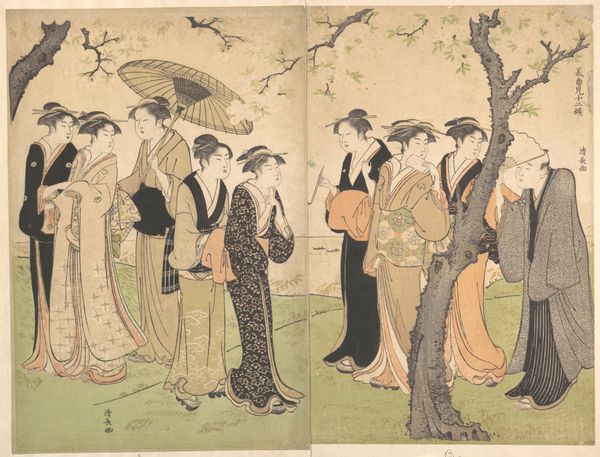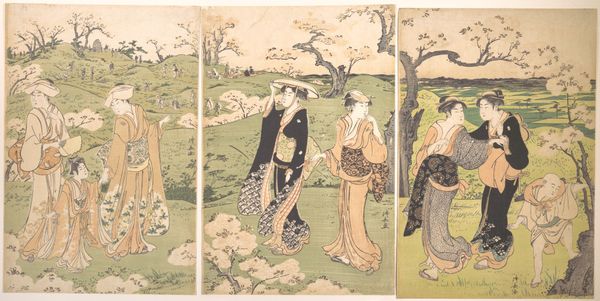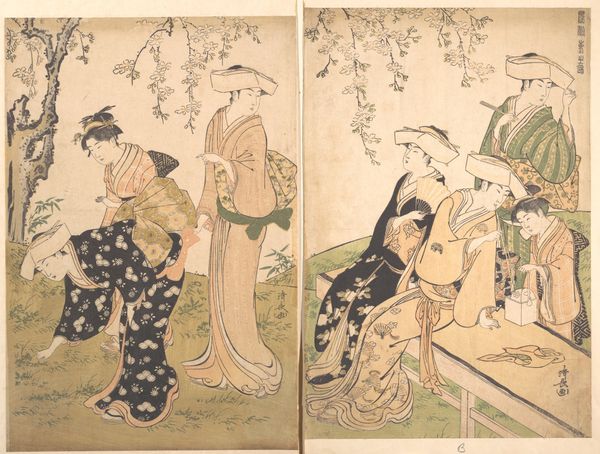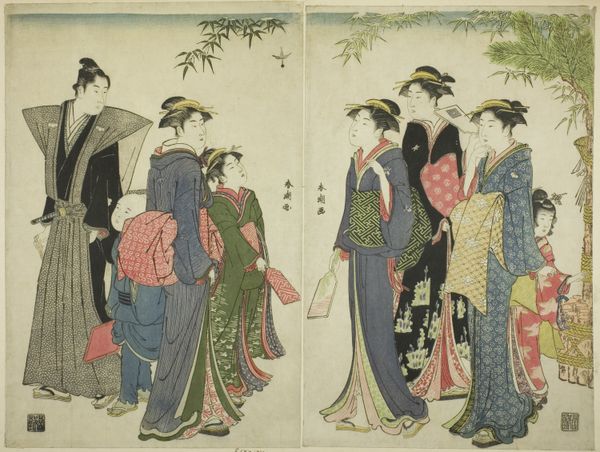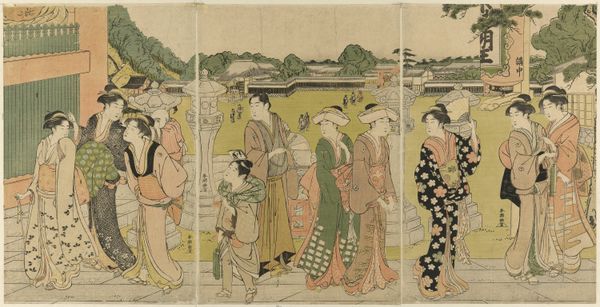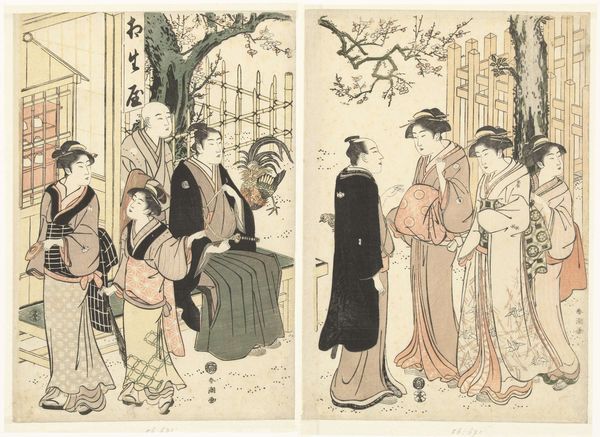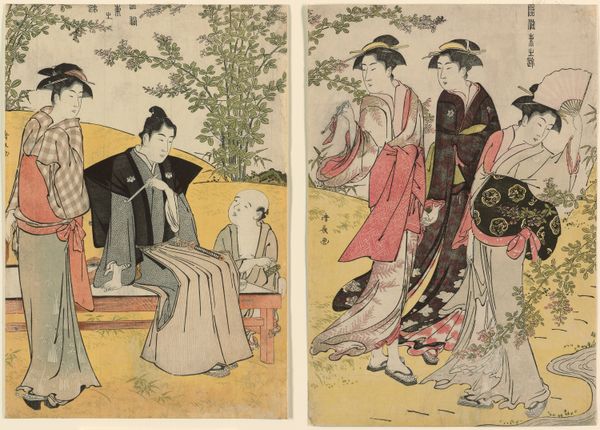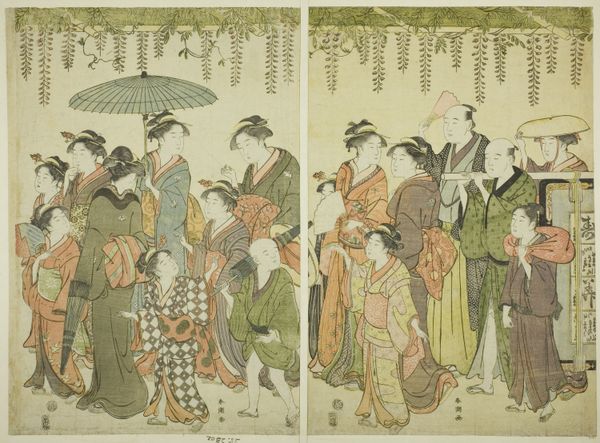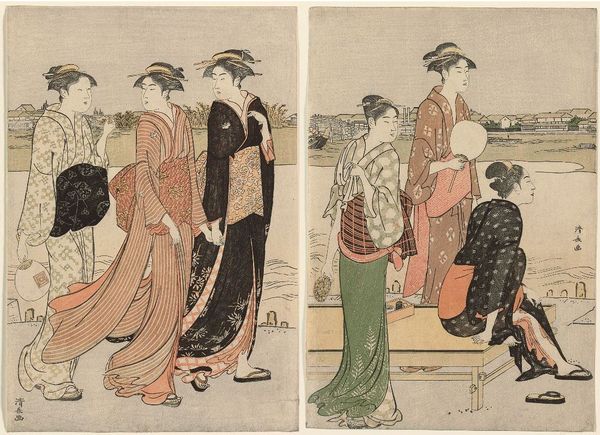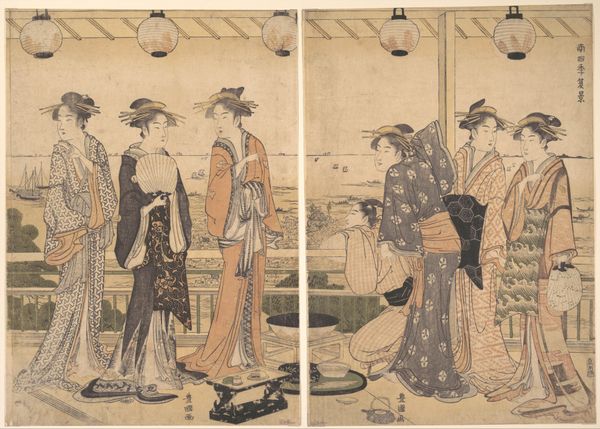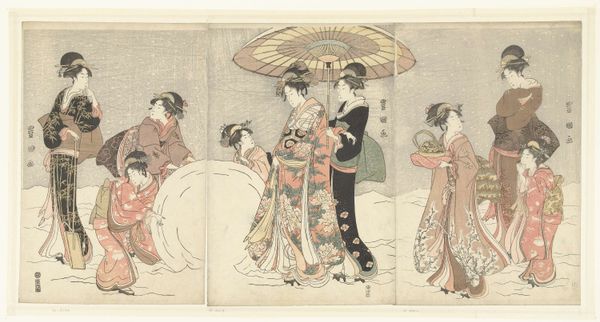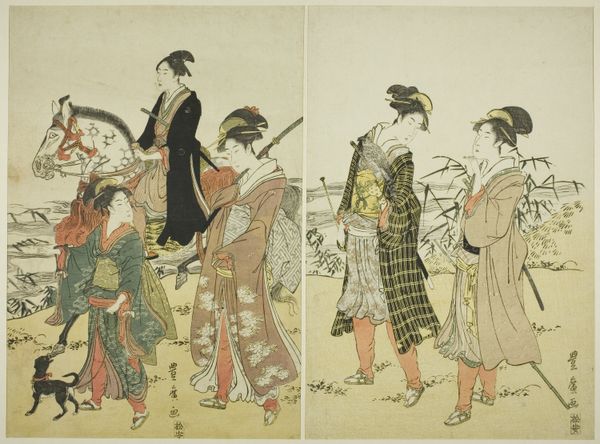
Dimensions: height 365 mm, width 251 mm, height 366 mm, width 250 mm, height 366 mm, width 250 mm
Copyright: Rijks Museum: Open Domain
Editor: So, here we have "Bewonderen van de kersenbloesem te Asukayama," or "Admiring Cherry Blossoms at Asukayama," a woodblock print triptych made by Katsukawa Shunchō around 1785-1790. What strikes me is the very deliberate layering effect that he achieved across the three panels; it makes it feel like a panoramic photo of multiple scenes, where the people seem like decorations. How do you approach a piece like this? Curator: From a materialist perspective, this print speaks volumes about the intersection of labor, consumption, and artistic creation within the Ukiyo-e tradition. Consider the process itself: the artist's design, the woodblock carver's skilled labor, and the printer's expertise, all essential. The cherry blossom viewing itself becomes a form of social consumption, doesn't it? It’s interesting how class is performed and reinforced through the details of their robes. Notice the textures created by the ink. How do these production methods impact the artwork? Editor: The way you point out the different hands that go into the process changes the way I view the final product. I hadn’t really considered the labor involved with each print. Knowing that each color needed a separate block makes me appreciate the subtlety in shading much more. It almost makes it feel like more of a collaborative enterprise. What kind of implications would that have in understanding Ukiyo-e art? Curator: Exactly! It highlights that art is not solely the product of individual genius but rather a complex interaction between the artist and the community and craftspeople around them. The mass production also implies broader distribution and consumption among different social strata, reflecting evolving material cultures and their access to artistic expression. Does analyzing these production practices shift your perspective of its value? Editor: It does! Seeing it less as a singular, genius artwork, and more as an embodiment of its time, crafted by numerous hands for mass consumption is... well, democratizing almost! I'll definitely pay closer attention to those material details from now on. Curator: Indeed! Understanding the process and the materiality opens a richer understanding. Now, consider how this lens could challenge traditional art boundaries in the future!
Comments
No comments
Be the first to comment and join the conversation on the ultimate creative platform.
